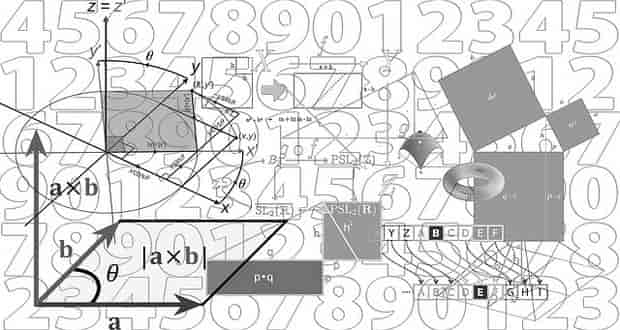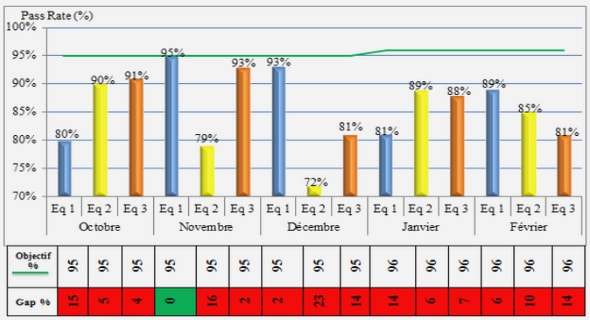Evolution du régime pluviométrique au Burkina Faso
Nous avons analysé dans cette partie les données pluviométriques observées et simulées sur le Burkina Faso pour caractériser les changements du régime pluviométrique au cours de la seconde moitié du 20ème siècle et ceux prédits par les MCRs dans un contexte de changement climatique. L’analyse consiste à déterminer les différents changements et de les caractériser à travers les caractéristiques de la saison des pluies. Cette analyse est rédigée sous forme d’un article scientifique soumis au journal water resouces research (Ibrahim B, Karambiri H, Polcher J, Yacouba H, Ribstein P, (2012) Changes in rainfall regime over Burkina Faso under a climate change condition, water resouces research.).
Résume de l’étude sur le changement du régime pluviométrique au Burkina Faso à partir des données brutes des MCRs
L’évolution du régime pluviométrique au Burkina Faso sur la période 1961-2009 se ca-ractérise par une subdivision de cette période en trois petites périodes de pluviométrie annuelle moyenne significativement différente : 1961-1969, 1970-1990 et 1991-2009. Ces changements de moyenne entre les trois périodes mettent en évidence une baisse signi-ficative de la pluviométrie annuelle de l’ordre de 20% au cours de la période 1971-1990 par rapport à 1961-1969, et une hausse de l’ordre de 15% de la pluviométrie annuelle au cours de la période 1991-2009 par rapport à la période 1971-1990. Ces changements de la pluviométrie annuelle au Burkina Faso sont liés à la variabilité de la fréquence des pluies tout comme ce qui fut démontré par Le Barbé et al. (2002) à l’échelle de la zone Sahélienne.
Cependant, les changements significatifs du régime pluviométrique, entre la période de référence de 1971-2000 et la période de prédiction de 2021-2050, varie selon le modèle climatique. Le modèle CCLM prédit une baisse de la pluviométrie annuelle liée à la di-minution de la fréquence des pluies tout comme dans les observations. Aussi, le modèle RCA prédit une baisse de la pluie annuelle liée à la baisse de la fréquence et de l’in-tensité moyenne des pluies. Alors que les modèles, HadRM3P et RACMO, prédisent une augmentation de la pluviométrie liée à l’augmentation de l’intensité moyenne des pluies. Le dernier modèle, REMO, ne prédit aucun changement significatif de la pluviométrie annuelle. Cependant, deux consensus se dégagent parmi les cinq modèles sur l’évolution des caractéristiques de la saison des pluies sont : une baisse de la fréquence de pluies très faibles (compris entre 0.1 et 5 mm/jr), un allongement de la durée moyenne des séquences sèches et une fin tardive des saisons de pluies. Aussi, quatre modèles (CCLM, HadRM3P, RACMO et REMO) montrent une augmentation de l’intensité moyenne des fortes pluies (>50 mm/jr).
Changes in rainfall regime over Burkina Faso under a climate change condition
Abstract
Sahelian rainfall regime has recorded a high variability during the last five decades with a significant decrease in the annual rainfall amount (ARA) since 1970. Analyzes through a linear regression model of the ARA performed over 1961-2009 in Burkina Faso show that the changes in ARA during this period are well corroborated by the changes in the number of rain days (NbRD) as found by other studies over West African Sahel. But, previous analyzes of the changes in rainfalls over the region for the future period (around 2050) from different GCM simulations show some discrepancies among the simulations. So, changes in the rainfall regime over Burkina Faso under the climate conditions of A1B scenario are characterized during this study from a comparison (the reference period of 1971-2000 against the prediction period of 2021-2050) of the characteristics of the rainy season (season onset, end of the season, NbRD, mean daily rainfall, maximum daily rainfall, ARA, and mean dry spell) simulated by five RCMs (CCLM, RCA, HadR3MP, RACMO, REMO). The two first models, predicted a decrease in ARA relates to a decrease in NbRD while the two following models predicted an increase relates to an increase in the mean daily rainfall amount. In contrast, the last model simulated a rainfall regime without any significant change in ARA. However, the consensuses that come out of the five RCMs are a decrease in the number of low rainfalls (0.1 to 5 mm/d), a lengthening of the mean dry spell, and a delayed end of the season.
Introduction
The first IPCC report on the climate change (Houghton, G.J. and J.J., 1990) has triggered a great interest in climate modeling in order to understand climate mechanisms and to evaluate climate evolution at short and long terms under different climate change scenarios (Nakicenovic and Swart, 2000; Solomon et al., 2007; Vanvyve et al., 2008). These simulations are implemented at different spatial scales, from the global to the regional, depending on the models and the aims of the studies. However, from regional to global simulations, all the climate models predict a warming climate during he 21st century (Prabhakara et al., 2000; Wu et al., 2007; Solomon et al., 2007). Other climate parameters such as rainfall are also predicted to change from regional to global scale under a warming condition (Solomon et al., 2009; Wang et al., 2009).
With a focus on West Africa, climate models predict different rainfall trends over the 21st century (Hulme et al., 2001; De Wit and Stankiewicz, 2006; Paeth et al., 2009). Hulme et al. (2001) found a significant increase in annual rainfall amounts over the central Sahel around 2050 from a set of seven coupled ocean-atmosphere global climate models (CCSR-NIES, CGCM1, CSIRO-Mk2, ECHAM4, GFDL-R15, HadCM2a, NCAR1) run under four different climate change scenarios (B1-low, B2-mid, A1-mid and A2-high). More recently, Cook and Vizy (2006) highlighted three types of rainfall anomalies over Sahel by the end of the 21st century from some projections of three coupled GCMs (CM2.1, MIROC3.2, CGCM2.3.2) under A2 scenario. Indeed, while CM2.1 predicts a decrease in annual rainfall amounts from the middle of the current century, MIROC3.2 predicts a significant increase in the annual rainfall amounts and CGCM2.3.2 predicts a slight decrease in the annual rainfall amounts with an increase in the dry year frequency. In the same way, Paeth and Hense (2004) found from a set of multi-ensemble GCM runs with ECHAM3 (coupled), ECHAM3/LSG and HADAM2, forced by different sea surface temperature (SST) variations and greenhouse gas (GHG) concentrations, that annual rainfall amount will increase over southern West Africa and steadily decrease over the Sahelian area. In another study performed with a regional climate model (REMO) under two scenarios A1B (intermediate scenario) and B1 (low scenario), Paeth et al. (2009) found a weak change in precipitation over the middle of the current century and a lengthening of dry spell within the rainy season. This change of dry spells length within the rainy season despite the unchanged annual rainfall amount shows that an annual analysis of rainfall evolution can hide some changes in the internal of the rainy season that can have significant impacts on water availability. Furthermore, Biasutti and Sobel (2009) found another change in the evolution of the characteristics of the rainy season from the CMIP3 rainfall. They found from an analysis of monthly data, a shortening of the rainy season over Sahel with a delayed season onset of the African monsoon during the 21st century. Altogether, the climate models simulations even from regional climate models don’t show any consensus in the trend of the annual rainfall amount over West African Sahel during the 21st century even when they are run under the same climate change scenario. However, despite these disparities and the uncertainties of the climate models (d’Orgeval et al., 2006; Déqué et al., 2007; Buser et al., 2010) in the evolution of the annual rainfall amount for the future period, a significant insight can be found on the characteristics of the rainy season. Hence, an investigation of the characteristics of the rainy season over the sahelian region from a fine time step rainfall data is needed for a better understanding of the main changes in the rainy seasons over the future period.
Moreover, from the observations, an analysis of the variability of rainfall regime over the region showed that changes in two characteristics of the rainy season (number of rainfall events and the mean rainfall amount per event) over 1950-1990 provides an interesting results on this variability (Paturel et al., 2002; Le Barbé et al., 2002; Laux et al., 2009). The decrease in annual rainfall amounts over the region during the last four decades (Nicholson, 2005; Lebel and Ali, 2009a; Mahé and Paturel, 2009) is characterized by a decrease in both rainfall frequency and intensity (Le Barbé et al., 2002; Balme et al., 2005) during the rainy season. However, the rainfall frequency presents the most important contribution to the annual rainfall amount variability over Sahel. The impact of the rainfall frequency (number of rain days) on the annual rainfall amount variability was first highlighted from an analysis of daily rainfalls over Niger (Le Barbé and Lebel, 1997). Also, crops growth and hydrological cycle depend more on rainy events organization in the rainy season than on annual rainfall amount (Sivakumar, 1992; Lebel and Le Barbé, 1997; Vischel and Lebel, 2007; Modarres, 2010). Thus, an analysis of the evolution of rainfall regime over the Sahelian area from the characteristics of the rainy season better highlights the different changes in rainfall pattern. But, such analysis require at least daily rainfall data at small spatial scale in order to take into account the high spatial disparity of rainfall over Sahel (Lebel, Amani, Cazenave, Lecocq, Taupin, Elguero, Gréard, Le Barbé, Laurent, d’Amato and Robin, 1996).
In this study, we analyze the evolution of rainfall regime over Burkina Faso, in West the African Sahel, with regard to the changes in eight characteristics of the rainy season (date of the season onset, date of the end of season, season duration, number of rain days, mean daily rainfall, maximum daily rainfall, annual rainfall amount, and mean dry spell length). These characteristics are determined throughout a discretization procedure of the rainy season (Ibrahim et al., 2012). The eight characteristics relate to the four main components of the rainy season: the season period, the rainfall frequency and intensity and the dry spell lengths. They describe overall the potentialities of the rainy season for crops growth and runoff processes (Barron et al., 2003; Balme et al., 2006). So, an assessment of their changes under the warm condition predicted by the climate models will give much detailed insights into the overall impacts of climate changes on the rainy season. The changes in the eight characteristics of the rainy season under the climate change conditions for the IPCC A1B scenario over Burkina Faso are determined from rainfall data produced by five regional climate models (CCLM, HadRM3P, RACMO, RCA, and REMO) run over 1950-2050 period. However, changes in the rainy season are evaluated from a comparison between the characteristics of the rainy season over the reference period of 1971-2000 and those over the prediction period of 2021-2050. For each period, a multiple linear regression model (Montgomery et al., 2001; Chen and Martin, 2009) is used to describe the relationship between the seven characteristics of the rainy season and the annual rainfall amount. The assessment of the different relationships through the annual rainfall amount will highlight the most important characteristics which significantly impact on the evolution of the rainfall regime.
This method is applied first on the observed data in order to verify whether the results presented by Le Barbé et al. (2002) for the Sahel are valuable at the small scale of Burkina Faso or what has changed since 1990 (last year of Le Barbé et al. (2002) analysis). So, these results will help to assess the ability of the linear regression model to describe changes in the characteristics of the rainy season.
Methodology
The rainy season over Burkina Faso is described throughout eight main characteristics which highlight the mean features and structure of the monsoon over the Sahelian area (Le Barbé and Lebel, 1997; Sivakumar, 1988, 1992; Barron et al., 2003; Sultan and Janicot, 2003): date of the season onset (Onset), date of the end of season (End), season timing, number of rain days (NbRD), mean daily rainfall (MDR), maximum daily rainfall (MaxR), annual rainfall amount, and mean dry spell length (DryS). The first characteristic is critical for the sowing period for food production while the second characteristic gives the rainy season length and determines when crops can reach their stage of maturity (Sivakumar, 1992; Ati et al., 2002). Also, the rainy season period is delimited by the date of the season onset and the date of the end of season from which the season timing is computed. Then, the following four characteristics describe the rainfall frequency and intensity which govern soil moisture and flow intensity along the rivers. Finally, the last characteristic, the mean dry spell length, quantifies the duration of the dry period between consecutive rainfalls. Indeed, long dry spells in a rainy season can lead to crop drying out and poor harvests. Hence, characterizing the changes in these characteristics between two different periods may highlight the changes in the benefits of the rainy sea sons in terms of available water resources and agronomic productions. Therefore, the significance of a change in each characteristic between the two periods is assessed with the Wilcoxon test of time series difference assessment (Ansari and Bradley, 1960); for a given characteristic, the shift or difference between two periods is significant if the p-value is lower than 0.05. In addition, the comparison periods for the observations are determined through a statistical procedure for the identification of periods with homogeneous data called segmentation (Hubert et al., 1989). The segmentation procedure separates the observed annual rainfall amount time series into wet and dry periods with a significant difference in the magnitude of the annual rainfall amounts over consecutive periods. But, for the RCMs data, we consider two periods of comparison, the reference period of 1971-2000 and the prediction period of 2021-2050. The first period is taken as the reference because the RCMs are driven by coupled GCMs and its inter-annual variability cannot be directly compared to the observations in terms of drier and wetter sequences. Then, the prediction period is taken with regard to its climate condition which is predicted to be warmer than the reference period by the climate models under the climate change condition (Hulme et al., 2001; De Wit and Stankiewicz, 2006; Paeth et al., 2011). The characteristics of the rainy season are determined at each station from the daily rainfalls. However, the interannual variability of the annual rainfall amount and the other characteristics of the rainy season over the ten stations are not significantly different: correlation coefficients are higher than 0.8 (results not shown). The analysis discusses the annually averaged values over the ten stations and the corresponding grid-boxes.


